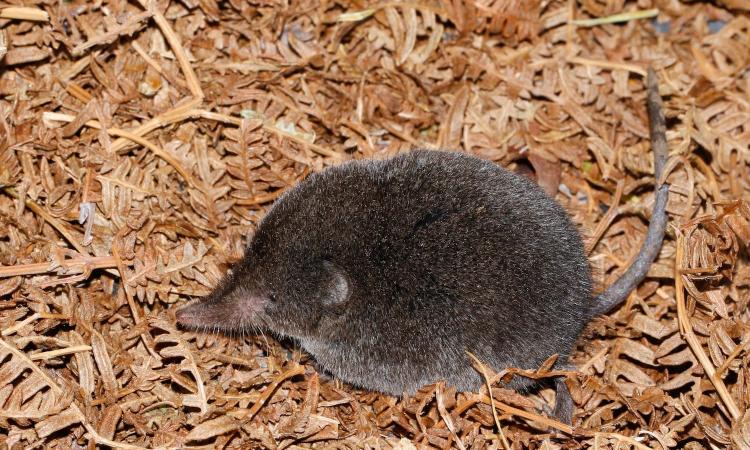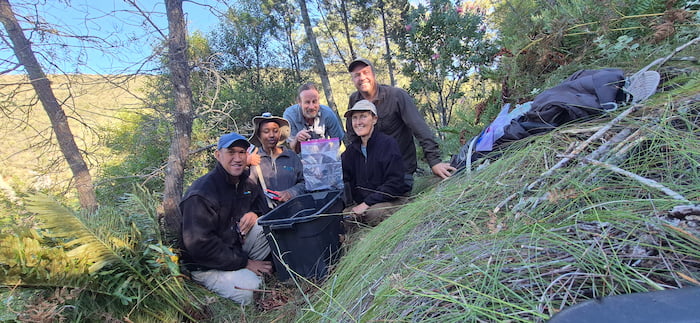Elusive Boosmansbos Long-Tailed Forest Shrew Rediscovered After 46 Years

Discovery After Decades: Rare Shrew Sighting Boosts Conservation Hopes
Conservationists are celebrating the confirmed rediscovery of the Boosmansbos long-tailed forest shrew (Myosorex longicaudatus boosmani) after 46 years, a significant find in South Africa's unique Cape Floristic Region, announced fittingly on International Day for Biological Diversity.
During a survey in CapeNature’s Boosmansbos Wilderness Area from May 3–6, 2025, a collaborative team from CapeNature, Grootvadersbosch Conservancy, Helihack, and volunteer biologists captured the tiny mammal. The sighting on May 4th, on the edge of a pristine Afromontane forest patch, underscores the vital role of protected areas in wildlife conservation.
The Shrew’s History and Status: A Critically Endangered Endemic
First described in 1979 by scientist Nico Dippenaar, the Boosmansbos long-tailed forest shrew is a distinct subspecies, geographically isolated by the Gouritz Valley. Its extremely narrow distribution, coupled with threats from ongoing forest loss and climate change, led to its 2016 listing as Critically Endangered on the IUCN Red List This expedition was the team's fourth attempt in as many years, guided by Dippenaar’s original notes. Dippenaar, now retired, wished them luck, calling the species “a bit of a darling.”
The Moment of Discovery: A "Unicorn" Found
Dr. Marienne de Villiers, a CapeNature faunal ecologist, described the elation: “At last, I can take this little shrew off my biological bucket list. It’s been a bit like a unicorn for me – a mythical creature I thought I would never see. It’s really comforting to know that at least part of its population, in at least some of its forest habitat, is well-protected.” This protection within the Wilderness Area is crucial for the species' survival.

Innovative Survey Methods: Helicopters and Humane Traps
Previous surveys using standard live-rodent traps had failed to locate the shrew. This year, the team employed a novel approach. Helihack – an organization known for using helicopters to combat invasive alien pines in remote mountain catchments – airlifted the team and their gear to a campsite near the target survey zone. From there, they hiked in and set 76 specialized pitfall traps. Each trap was baited with bedding, shelter, and occasional earthworms, ensuring humane treatment and maximizing the chances of a successful and ethical capture.
Confirmation and Release: Vital Data from a Tiny Mammal
One of the final traps revealed a small mammal with a characteristic 6 cm tail, weighing just 13.7g – unmistakably the Boosmansbos long-tailed forest shrew. After being carefully measured and photographed for scientific records, the shrew was released unharmed back into its precious forest habitat. These data are invaluable for understanding this rare species.
Looking Ahead: Research and Broader Conservation Impact
This rediscovery is a beacon of hope and highlights the power of collaborative conservation. A genetic sample collected will be analyzed to clarify the shrew’s taxonomic relationship to lower-altitude relatives. Future research aims to uncover its life history, behavioral ecology, and the size and range of its only known population. Intensive surveys of other forest patches may yet reveal more about its distribution.
The return of this “bit of a darling” provides vital optimism for those safeguarding the unique biodiversity of the Western Cape. This success supports broader conservation goals, such as South Africa's commitment to the Kunming-Montreal Global Biodiversity Framework, including the target to protect 30% of terrestrial and marine areas by 2030. CapeNature's ongoing efforts in expanding protected areas and managing ecosystems are crucial in this context. This find, especially on International Day for Biological Diversity, renews commitment to protecting these irreplaceable natural treasures.
This article was curated, reviewed, and verified by the Conservation Mag team. Information provided by CapeNature.
Discuss this article
Clicking links may earn us commission. . Stock images by Depositphotos.
Subscribe: Stories about wildlife, habitats and heroes
Welcome to Conservation Mag where we celebrate nature preservation through ecotourism and wildlife travel while we look for ways to preserve our heritage by supporting nature conservation. Starting conversations about the positive action people like you and I are taking to make a change.
Quick Links
Work With Us
![]()

